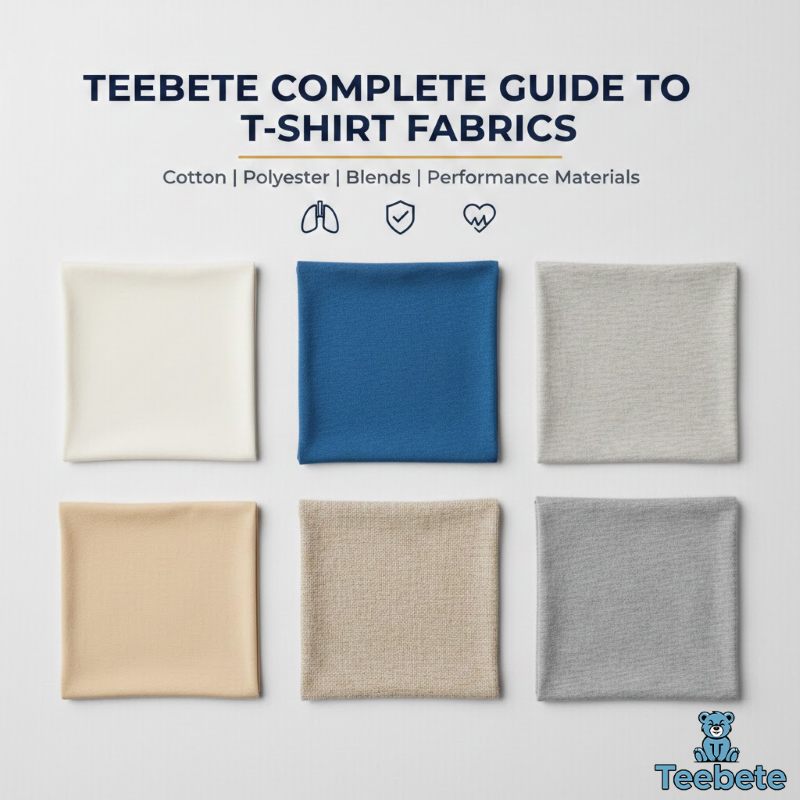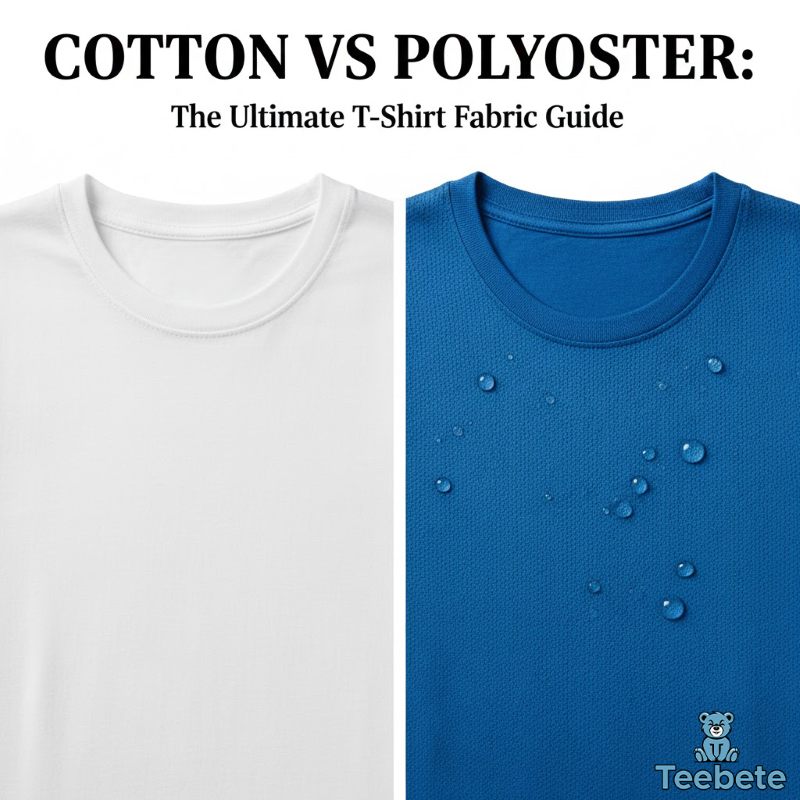How Do Moisture-Wicking and Temperature-Regulating Fabrics Work?
Whether you’re an athlete pushing your limits, a professional navigating a busy workday, or someone who simply values comfort in everyday life, understanding how modern performance fabrics work can transform your wardrobe choices. Moisture-wicking and temperature-regulating fabrics represent a remarkable convergence of textile science and practical innovation, designed to keep you comfortable regardless of activity level or environmental conditions.
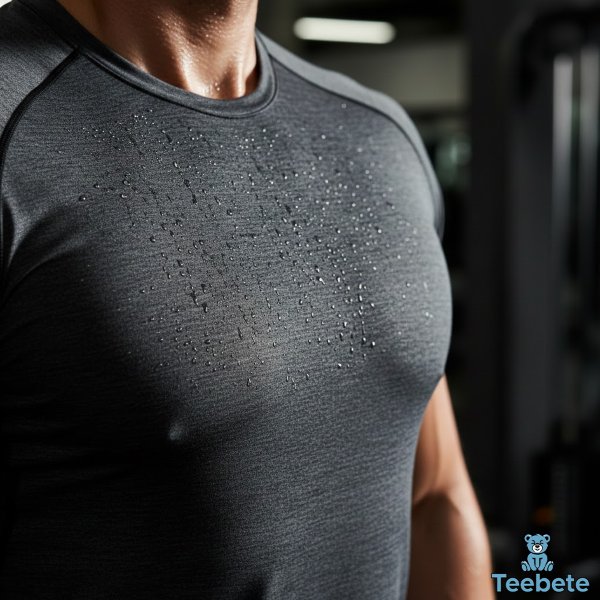
At Teebete, we’ve spent years studying and selecting garments with advanced fabric technologies that respond intelligently to your body’s needs. Our expertise in curating performance textiles allows us to explain not just what these fabrics do, but how they accomplish their impressive feats of temperature and moisture management.
Understanding Moisture-Wicking Technology
The Science Behind Moisture-Wicking

Moisture-wicking fabrics operate on a fundamental principle called capillary action, which describes the movement of liquid through narrow spaces without external force. When you sweat during physical activity, moisture-wicking fabrics quickly pull that perspiration away from your skin to the fabric’s outer surface, where it can evaporate rapidly.
The process relies on the careful engineering of fiber structure and chemical properties. Unlike traditional fabrics that absorb moisture and become saturated, moisture-wicking materials are designed to transport water molecules along their surface through microscopic channels within the fabric. This creates two essential benefits: your skin stays dry, and your body can regulate temperature efficiently through natural evaporative cooling.
According to research published on moisture management, the key lies in achieving the perfect balance of hydrophobic and hydrophilic properties. Purely hydrophobic fibers that completely repel water won’t wick moisture at all. Conversely, highly absorbent materials like cotton soak up sweat but fail to move it away from your body. The sweet spot involves materials with low moisture regain that still maintain enough water attraction to enable capillary transport.
The Role of Fiber Architecture
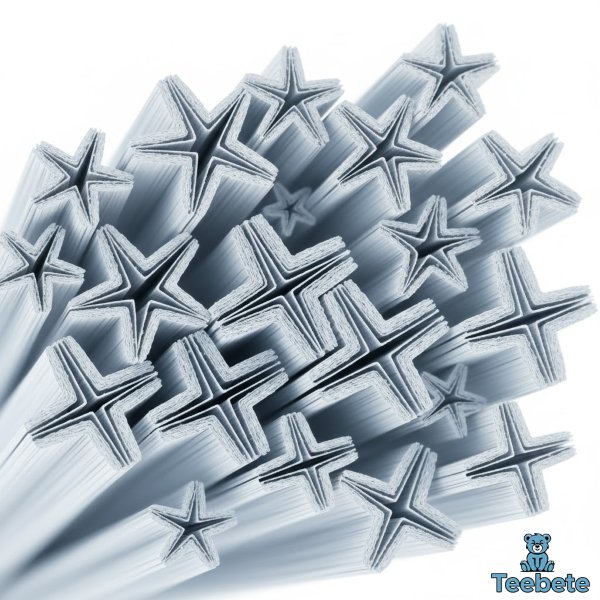
The effectiveness of moisture-wicking depends heavily on fabric surface area and fiber arrangement. Synthetic fabrics like polyester and nylon excel at moisture-wicking because manufacturers can precisely control their structure during production. These hydrophobic fibers are often chemically treated with hydrophilic coatings or blended with other materials to optimize their wicking performance.
Modern polyester moisture wicking works through specially engineered cross-sections in the yarn itself. Rather than circular fibers, many high-performance fabrics feature grooved or channeled fiber shapes that actively promote water transport away from the skin. This geometric innovation significantly accelerates the wicking process compared to traditional fabric construction.
Natural fabrics like merino wool also demonstrate impressive moisture-wicking capabilities through a different mechanism. Wool fibers absorb small amounts of liquid into their core while simultaneously transporting moisture through small openings in the fabric structure. This allows the yarn surface to remain dry to the touch even while managing substantial amounts of perspiration.
Temperature-Regulating Fabrics: Adaptive Comfort Technology
Phase Change Materials Revolution

Temperature-regulating fabrics represent an even more sophisticated level of textile engineering. The most advanced systems incorporate phase change materials—substances that absorb and release thermal energy as they transition between solid and liquid states. Originally developed by NASA for space suits, these microencapsulated materials now appear in commercial athletic wear, outdoor gear, and even everyday clothing.
How do phase change materials regulate temperature in clothing? The technology works through thermodynamic principles. When your body temperature rises during exercise, the microencapsulated paraffins within the fabric absorb excess heat energy, converting from solid to liquid phase. This process pulls heat away from your skin, creating a cooling effect. When body temperature drops, the materials solidify again, releasing stored thermal energy back to your body.
Research on PCM-incorporated textiles demonstrates that these smart textiles can maintain a stable microclimate between fabric and skin, even as external temperatures and activity levels fluctuate dramatically. The phase transition typically occurs around human body temperature (approximately 37°C or 98.6°F), making the system responsive to natural thermal regulation needs.
Infrared Radiation and Thermal Management
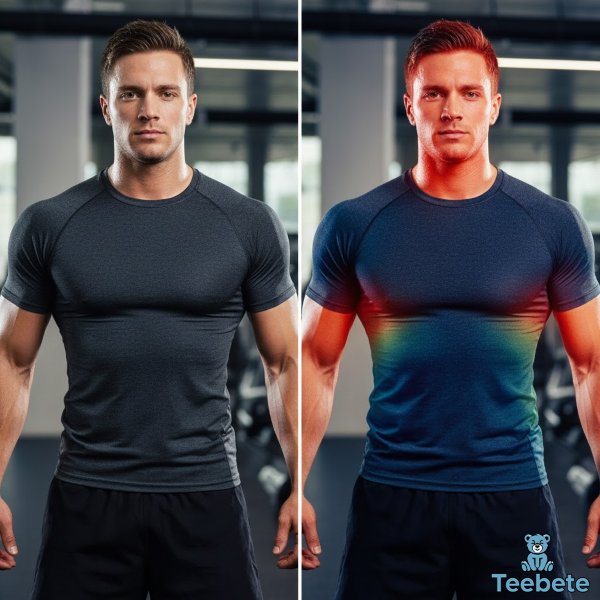
Beyond phase change materials, temperature control textiles employ several other mechanisms for thermoregulation technology. Some advanced fabrics incorporate materials that reflect infrared radiation back toward the body in cold conditions, while others feature enhanced breathability that allows excess heat to escape during intense activity.
The fabric pores and overall construction play crucial roles in thermal management. Knitted fabrics generally offer better breathability than tightly woven alternatives because their looser structure permits greater air circulation. This humidity management capability works synergistically with moisture-wicking properties—as sweat moves to the fabric surface, enhanced airflow accelerates evaporation cooling.
Carbon nanotubes and other advanced materials are pushing the boundaries of what temperature-regulating fabrics can achieve. These innovations enable fabrics to actively respond to environmental changes, adjusting their insulation properties based on external conditions and body heat output.
The Difference Between Moisture-Wicking and Breathable Fabrics
Many consumers confuse moisture-wicking with breathability, but these represent distinct fabric properties that work together for optimal comfort. Breathable fabrics allow air and water vapor to pass through the material, preventing the buildup of heat and humidity against your skin. Moisture-wicking specifically describes the active transport of liquid sweat from skin contact to the fabric’s exterior surface.
The best performance fabrics combine both characteristics. A moisture-wicking base layer pulls sweat away from your body, while breathability ensures that moisture can evaporate into the surrounding air rather than becoming trapped within the garment. This synergy creates the dry, comfortable feel that distinguishes high-quality athletic wear from ordinary clothing.
Synthetic vs. Natural Fibers for Performance
Why Polyester Is Better Than Cotton for Moisture Wicking

The dominance of synthetic fabrics in performance apparel stems from their superior moisture management capabilities. Cotton, despite its reputation as a comfortable natural fiber, performs poorly as workout clothing material. Cotton’s high absorbency means it soaks up sweat like a sponge, becoming heavy and saturated during exercise. The fabric then takes considerable time to dry, leaving you feeling cold and clammy.
Polyester, nylon fabrics, and other synthetic materials maintain moisture regain values below 1%, meaning they absorb minimal water into their fiber structure. Instead, these quick-drying fabrics transport moisture along their surfaces through capillary action. A polyester shirt can be nearly dry within minutes of finishing intense exercise, while a cotton garment might remain damp for hours.
Natural Alternatives: Merino Wool Performance
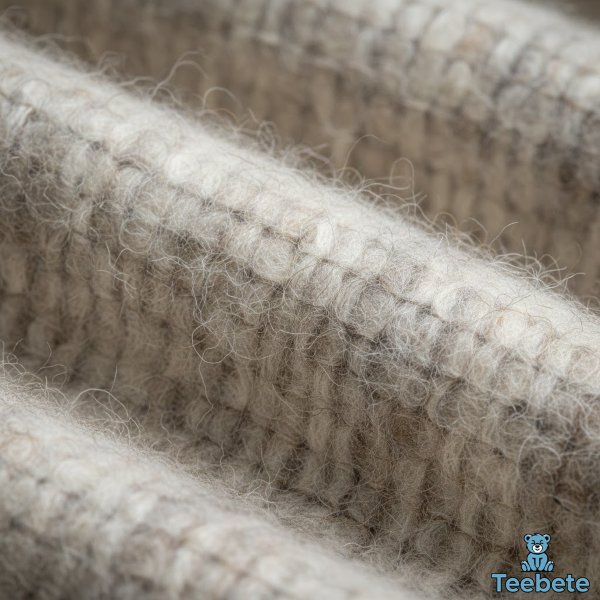
For those seeking natural fiber options, merino wool offers remarkable performance characteristics. Unlike coarser wool varieties, merino features ultra-fine fibers that feel soft against skin while maintaining excellent thermoregulation properties. The fiber can absorb up to 30% of its weight in moisture before feeling wet, yet it continues to provide insulation and warmth even when damp.
Merino wool also possesses natural antimicrobial properties that resist odor-causing bacteria growth—a significant advantage during multi-day outdoor adventures or travel when washing opportunities are limited. Many manufacturers now blend merino with synthetic fibers to combine the best attributes of both material types.
Practical Applications and Use Cases
What Are the Best Moisture-Wicking Fabrics for Exercise?
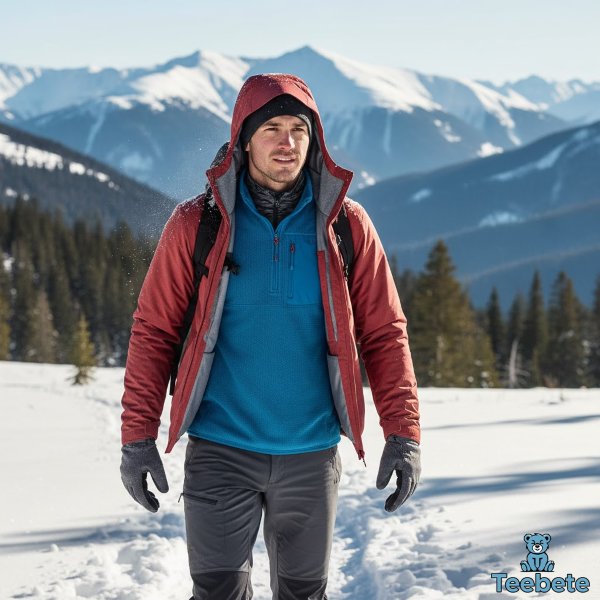
Selecting appropriate performance fabrics depends on your specific activities and environmental conditions. For high-intensity cardio workouts, look for lightweight synthetic blends that prioritize maximum breathability and rapid moisture transport. Base layers made from polyester or nylon work exceptionally well for these applications, as they won’t become waterlogged during intense sweat sessions.
For outdoor activities in variable weather, layering systems that combine different fabric technologies prove most effective. A moisture-wicking base layer manages perspiration, an insulating mid-layer provides warmth, and a weather-resistant outer shell protects against wind and precipitation. This approach allows you to regulate temperature by adding or removing layers as conditions change.
Cold-weather activities benefit from fabrics that balance moisture management with insulation. Getting sweaty during winter sports creates significant discomfort and even danger if that moisture doesn’t evaporate properly. Moisture-wicking long underwear and mid-layers prevent the accumulation of perspiration that can lead to rapid heat loss when you stop moving.
Smart Textiles in Everyday Wear

Temperature-regulating and moisture-wicking technologies are no longer confined to specialized athletic gear. Modern casual wear, business attire, and even sleepwear increasingly incorporate these performance features. The subtle integration of smart textiles into everyday clothing reflects growing consumer demand for garments that enhance comfort throughout daily activities.
At Teebete, we understand that performance isn’t just for athletes. Our carefully selected temperature control textiles serve professionals who need to stay fresh during long workdays, travelers seeking comfort during extended journeys, and anyone who values the confidence that comes from knowing their clothing actively works to maintain optimal comfort.
Care and Maintenance for Performance Fabrics
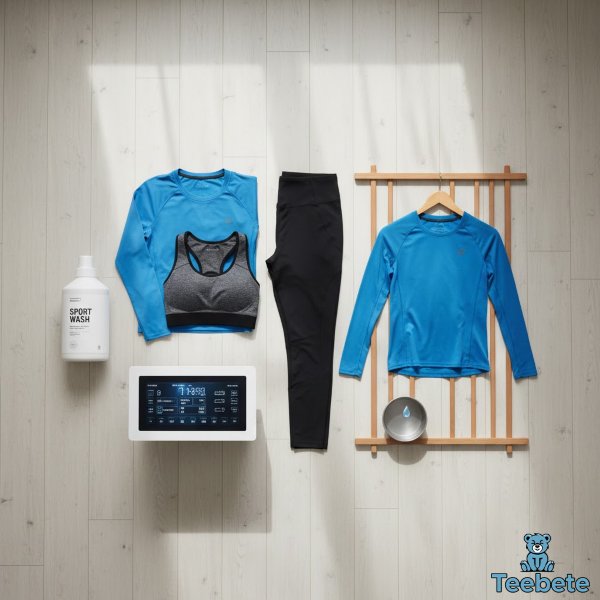
Proper care extends the lifespan and maintains the effectiveness of moisture-wicking and temperature-regulating garments. Most performance fabrics tolerate machine washing in cool or warm water, but avoid fabric softeners—these products deposit waxy residues that interfere with the carefully engineered surface treatments that enable wicking action.
Air drying or using low dryer heat settings preserves fabric integrity better than high temperatures. While synthetic fabrics generally dry quickly on their own, excessive heat can damage elastic fibers or compromise the adhesion of chemical treatments that enhance performance properties.
For garments incorporating phase change materials, follow manufacturer guidelines carefully. Most PCM-enhanced clothing maintains functionality through hundreds of wash cycles when properly cared for, but harsh detergents or bleach can potentially damage the microencapsulated materials.
Health and Safety Considerations
What Is the Unhealthiest Fabric to Wear?
While discussing performance fabrics, it’s important to address health concerns surrounding synthetic materials. Some consumers worry about potential toxicity from chemicals used in fabric production and finishing processes. The reality is nuanced—research on fabric safety indicates that concerns primarily relate to manufacturing processes and chemical finishing treatments rather than the base synthetic fibers themselves.
Polyester and nylon, when produced according to modern safety standards and without excessive chemical treatments, are generally safe for skin contact. The health risks often cited stem from permanent chemical finishes like stain-resistant or wrinkle-free treatments that may contain compounds like formaldehyde or perfluorinated chemicals (PFCs).
For individuals with sensitive skin or chemical sensitivities, seeking fabrics with certifications like OEKO-TEX Standard 100 or Global Organic Textile Standard (GOTS) provides assurance that the textiles have been tested for harmful substances. Teebete prioritizes stocking garments made with materials that meet rigorous safety standards, ensuring the performance fabrics we offer deliver comfort without compromising health.
Microfiber Shedding and Environmental Impact
A legitimate concern with synthetic fabrics involves microfiber pollution. When laundered, polyester and nylon garments release tiny plastic fibers that enter waterways and accumulate in aquatic ecosystems. While this represents a real environmental challenge, emerging solutions include washing bags that capture microfibers and new fabric treatments that reduce shedding.
Balancing performance benefits with environmental responsibility remains an ongoing challenge for the textile industry. Many manufacturers now incorporate recycled polyester from plastic bottles, reducing petroleum dependency while delivering the moisture-wicking performance consumers expect.
The Future of Fabric Technology
Innovation in textile science continues advancing at a remarkable pace. Researchers are developing responsive fibers that automatically adjust their properties based on environmental sensors, fabrics that generate electricity from body movement, and even materials that can change color or pattern in response to temperature shifts.
Bio-based synthetic fibers derived from renewable resources like corn or sugarcane offer potential alternatives to petroleum-based polyester while maintaining similar performance characteristics. These developments suggest a future where high-performance fabrics deliver exceptional comfort without environmental compromise.
How do smart fabrics adjust to temperature changes? The next generation of intelligent textiles may incorporate electronic components that actively heat or cool based on biometric feedback, creating truly personalized thermal environments within clothing. While such technologies remain largely experimental, they represent the logical evolution of temperature-regulating fabric development.
Frequently Asked Questions
How does temperature regulating fabric work?
Temperature regulating fabric works primarily through phase change materials (PCMs) embedded within or coated onto textile fibers. These microencapsulated substances absorb excess body heat when you’re warm, converting from solid to liquid phase. When your temperature drops, the PCMs solidify again, releasing stored thermal energy back to your body. This creates an active thermal buffering system that maintains a stable, comfortable microclimate against your skin regardless of activity level or external temperature fluctuations.
How do moisture-wicking fabrics work?
Moisture-wicking fabrics work through capillary action—the movement of liquid through narrow spaces within the fabric structure. These materials feature carefully engineered fibers with low moisture absorption but sufficient surface affinity to water, allowing sweat to be pulled from your skin and transported to the fabric’s outer surface. Once there, the moisture spreads across a larger surface area and evaporates rapidly into the surrounding air. This process keeps your skin dry and enables your body’s natural cooling mechanisms to function efficiently.
What is the unhealthiest fabric to wear?
The unhealthiest fabrics are typically those treated with excessive chemical finishes rather than specific fiber types themselves. Fabrics treated with formaldehyde resins for wrinkle-resistance, perfluorinated chemicals (PFCs) for stain resistance, or certain flame retardants pose the greatest health concerns. These treatments can cause skin irritation, allergic reactions, and in some cases, exposure to potentially carcinogenic substances. When choosing fabrics, look for certifications like OEKO-TEX or GOTS that indicate testing for harmful substances. Untreated natural fibers like organic cotton, linen, and silk, or synthetic performance fabrics from reputable manufacturers following strict safety standards, represent healthier choices.
How does the wicking process work?
The wicking process works through a combination of capillary action and surface tension effects within fabric structures. When sweat contacts the fabric, the molecular forces between the liquid and the fiber’s internal surfaces cause moisture to move through tiny spaces in the material. This movement occurs without gravity’s assistance—in fact, wicking can pull moisture upward against gravity. The process requires fabrics with precise hydrophobic-hydrophilic balance: too much water absorption creates saturation, while complete water repellency prevents wicking entirely. Modern performance fabrics achieve optimal wicking through fiber engineering, chemical treatments, and construction techniques that maximize surface area and create efficient moisture transport pathways.
Can moisture-wicking fabrics keep you warm in cold weather?
Yes, moisture-wicking fabrics are crucial for warmth in cold weather, though they work differently than insulation. The primary danger in cold conditions comes from perspiration accumulating against your skin and then evaporating, which dramatically increases heat loss. Moisture-wicking base layers transport sweat away from your body before it can pool and cool, maintaining the dry microclimate essential for thermal comfort. Combined with insulating mid-layers and weather-resistant outer shells, moisture-wicking fabrics form the foundation of effective cold-weather layering systems. Many winter sports enthusiasts rely on these fabrics to stay warm precisely because they prevent the dangerous cooling effect of trapped perspiration.
Do temperature-regulating fabrics work for hot weather too?
Absolutely. Temperature-regulating fabrics with phase change materials are designed to work bidirectionally—cooling when you’re hot and providing warmth when cold. In hot weather, the PCMs absorb excess body heat as they melt, creating a cooling sensation. When combined with moisture-wicking properties and breathable construction, these fabrics help maintain optimal comfort even during heat waves or tropical conditions. The key advantage is that temperature-regulating fabrics respond to your body temperature rather than just ambient conditions, providing personalized thermal management regardless of the weather.
How long do moisture-wicking properties last in performance fabrics?
The longevity of moisture-wicking properties depends on fabric construction and care practices. Fabrics where wicking results from fiber engineering (like specially shaped polyester cross-sections) maintain their properties throughout the garment’s lifetime. However, chemical treatments applied to fabric surfaces can degrade over time, especially with repeated washing, exposure to fabric softeners, or high-heat drying. High-quality performance fabrics from reputable manufacturers typically retain effective moisture-wicking through hundreds of wash cycles when properly cared for. Following care instructions—particularly avoiding fabric softeners—significantly extends the functional lifespan of these technical textiles.
Are there natural alternatives to synthetic moisture-wicking fabrics?
Several natural fibers offer moisture-wicking performance, with merino wool being the most notable example. Merino manages moisture through a different mechanism than synthetics—it can absorb significant moisture into its fiber core while wicking additional moisture along its surface, keeping you comfortable even in damp conditions. Bamboo fabric and certain specialized cotton treatments also provide some wicking capability, though generally not matching synthetic performance for high-intensity activities. For those preferring natural materials, blends combining merino wool with synthetic fibers often deliver excellent performance while maintaining the benefits of natural fibers like odor resistance and temperature regulation.
Summary: Key Concepts in Performance Fabric Technology
| Concept | Key Information | Practical Application |
|---|---|---|
| Capillary Action | Liquid movement through narrow fabric spaces driven by molecular forces between water and fiber surfaces | Enables moisture to move from skin to fabric exterior without gravity assistance; fundamental to wicking process |
| Moisture-Wicking | Active transport of liquid sweat from skin contact to fabric surface for rapid evaporation | Keeps skin dry during exercise; prevents discomfort from saturated clothing; enables natural body cooling |
| Breathability | Fabric’s ability to allow air and water vapor passage through material structure | Works synergistically with wicking; ensures evaporated moisture escapes rather than becoming trapped |
| Phase Change Materials | Microencapsulated substances that absorb/release heat during solid-liquid phase transitions | Provides active temperature buffering; absorbs excess heat when warm, releases it when cool |
| Thermoregulation | Fabric’s ability to help maintain stable body temperature through various mechanisms | Combines moisture management, insulation, and thermal transfer to optimize comfort across conditions |
| Hydrophobic vs Hydrophilic | Water-repelling vs water-attracting fiber properties | Optimal wicking requires balanced properties—enough attraction for capillary action without excessive absorption |
| Synthetic Fabrics | Polyester, nylon, spandex—petroleum-based fibers with engineered properties | Low moisture regain, quick-drying, durable; excellent for high-intensity activities requiring maximum wicking |
| Natural Alternatives | Merino wool, bamboo—natural fibers with performance characteristics | Offer wicking plus additional benefits like antimicrobial properties; often preferred for multi-day wear |
| Fiber Architecture | Physical structure including cross-section shape, surface area, and arrangement | Engineered shapes (grooves, channels) enhance wicking; larger surface area increases evaporation speed |
| Smart Textiles | Fabrics incorporating advanced materials for responsive performance | Include PCMs, infrared-reflective materials, and potentially electronic components for active temperature control |
| Care Requirements | Proper maintenance to preserve performance properties | Avoid fabric softeners; use appropriate water temperature; air dry or low heat to maintain functionality |
| Safety Considerations | Fabric treatments and manufacturing process impacts on health | Choose certified fabrics (OEKO-TEX, GOTS); be aware of chemical finishes; consider environmental impacts |
Conclusion: Making Informed Fabric Choices
Understanding how moisture-wicking and temperature-regulating fabrics work empowers you to make informed decisions about your clothing. Whether you’re selecting workout clothes, outdoor gear, professional attire, or everyday wear, recognizing the science behind these technologies helps you choose garments that genuinely enhance comfort and performance.
The convergence of textile engineering, materials science, and manufacturing innovation has created fabrics that actively respond to your body’s needs. From the capillary action that pulls sweat away from your skin to the phase change materials that buffer temperature fluctuations, these technologies represent remarkable achievements in practical applied science.
At Teebete, we carefully curate our collection to feature garments made with advanced fabric technologies that prioritize safety, sustainability, and genuine performance benefits. The future of textiles promises even more sophisticated solutions for comfort and functionality, but the fundamental principles—managing moisture, regulating temperature, and enhancing wearer experience—will continue guiding our selection criteria.
As you build your wardrobe, consider how different fabrics serve different purposes. High-intensity activities benefit from maximum wicking and breathability. Cold weather demands moisture management combined with insulation. Everyday comfort might prioritize subtle temperature regulation in professional-looking garments. By matching fabric technology to your specific needs, you can experience the full benefits of modern performance textiles.
The remarkable science behind moisture-wicking and temperature-regulating fabrics transforms abstract concepts like capillary action and phase transitions into tangible improvements in daily comfort. Understanding these principles helps you appreciate the engineering excellence in your clothing and make choices that truly enhance your quality of life.

Hi, I’m Mia Wilson. I’m a journalist and content creator based in New York with over six years of experience covering sports, holidays, fan culture, and community events across the United States. I focus on exploring team histories, traditions, celebrations, and the broader impact of sports and cultural events on local communities. I’m passionate about providing accurate, engaging, and educational content for readers of all ages, helping them understand the stories, experiences, and events that make sports and celebrations so meaningful.

